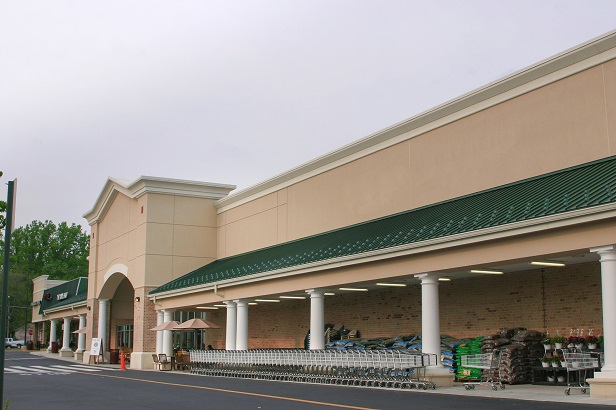The future grocery store is coming sooner than many realize, according to a new CBRE report. What will this store look like? CBRE tells of a fully automated checkout process, a greater emphasis on prepared meals, a proliferation of smaller, convenience-store grocery outlets, and more collaboration between grocers and nontraditional partners such as fitness operators and restaurants.
Grocery-anchored centers are favored by real estate investors because of their steady if slow sales growth and minimal e-commerce penetration relative to other categories. Total grocery sales, including revenue through all channels—from traditional grocers to warehouse clubs— grew by 3.5% in 2018 to more than $743 billion. Overall retail sales grew by 5%.
At the same time, though, US grocers are facing significant pressure to adapt to changing consumer preferences, new store formats, automation and delivery demand.
“The store will remain central to the grocery industry, but its format and function will be reshaped by multiple factors over the coming years,” said CBRE's Melina Cordero in prepared comments. “Grocery operators must diversify their offering to best compete, which will lead to varied store formats for different markets, nontraditional merchandise assortments and an even greater focus on customer convenience.”
Among CBRE's predictions:
The grocery checkout line will disappear within 10 years
Technological advancements are converging to replace the traditional checkout line, including carts with built-in barcode scanners and credit-card swipers; mobile-payment apps; weight sensors and cameras; and merchandise-scanning robots. Technology also will allow shelves to keep track of inventory. The elimination of checkout lines will allow grocery operators to free up real estate for revenue-generating functions such as click-and-collect services.
Major grocery operators will expand further into convenience-store formats
The industry's largest players are finding a strong growth opportunity in opening and operating smaller-format stores in dense, mostly urban markets. Many of these stores focus on convenience fare such as prepared meals. Already, big names have moved into the space, including Kroger Co. with its Express Mart format and Hy-Vee with Fast & Fresh.
Collaborations will expand grocers' offerings
Grocers will seek to add higher-margin merchandise and services in their stores to counter the steep costs of last-mile delivery. That will include more prepared meals and in-store restaurants. It also will entail collaborations, such as grocer Hy-Vee's arrangement to cross-promote Orangetheory Fitness' exercise classes with Hy-Vee's healthy food offerings.
Intensifying competition spurs reinvestment in stores
Various large grocery operators have announced sweeping remodeling and redesign plans for portions of their US store base as competition increases from supercenters, wholesale clubs and small-format rivals. Some of this expenditure also is going to improving in-store technology and omnichannel services such as curbside pickup.
Grocery spending will shift into non-traditional channels
As this happens, the industry is diversifying its store formats, sizes and locations. In addition to warehouse clubs and supercenters driving growth in large-format, suburban locations, there also has been a proliferation of smaller-format specialty concepts in denser, urban markets. In fiscal 2019, Costco announced plans to add approximately 17 warehouse clubs to its portfolio in addition to the 13 clubs added in 2018 for a total of 4.4 million square feet. Specialty grocer Trader Joe's opened six new stores in the first four months of 2019 alone, with a focus on dense, urban locations. Discount specialist Aldi has announced even more aggressive growth, with plans to invest $3.4 billion to open 200 stores a year through 2022 and committing $1.6 billion to remodel approximately 1,300 existing stores.
Online grocery share will reach between 5% and 10% by 2022 and will fundamentally alter but not replace the store
The inevitable rise of online grocery will require significant adjustments in store content, layout and design. In large-format locations, grocers will have to dedicate space for click-and-collect counters and curbside pick-up, which will be an especially popular purchasing option in suburban and rural locations. Many players are already making these investments: Walmart plans to spend $833.8 million for new store construction and/or improvements across six states in 2019, while Aldi will spend more than $5 billion on its store strategy over the next five years. More traditional grocery store formats and specialty players, especially in urban and more densely populated areas, will shift store space toward distribution uses and focus customer-facing space on higher-margin products and experiences.
© Touchpoint Markets, All Rights Reserved. Request academic re-use from www.copyright.com. All other uses, submit a request to [email protected]. For more inforrmation visit Asset & Logo Licensing.








